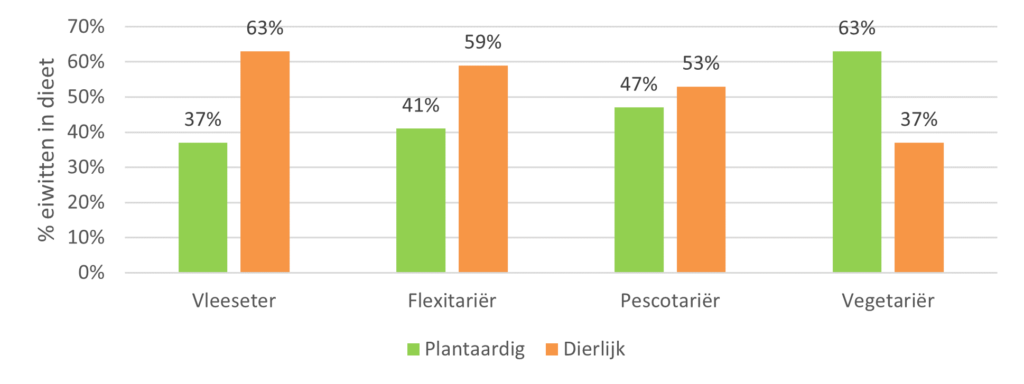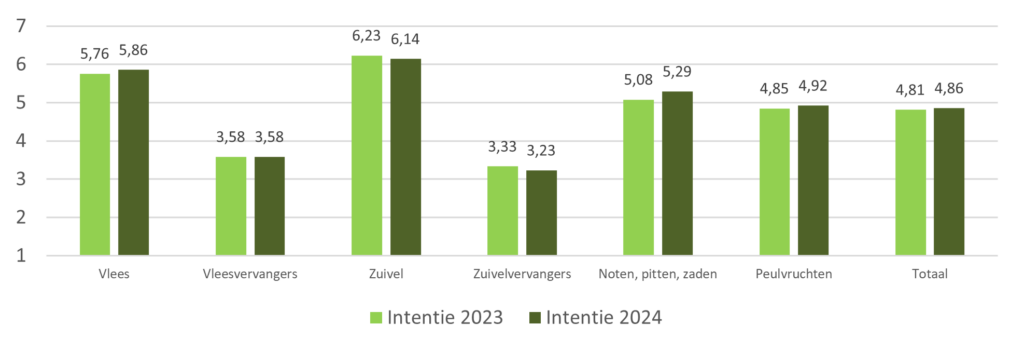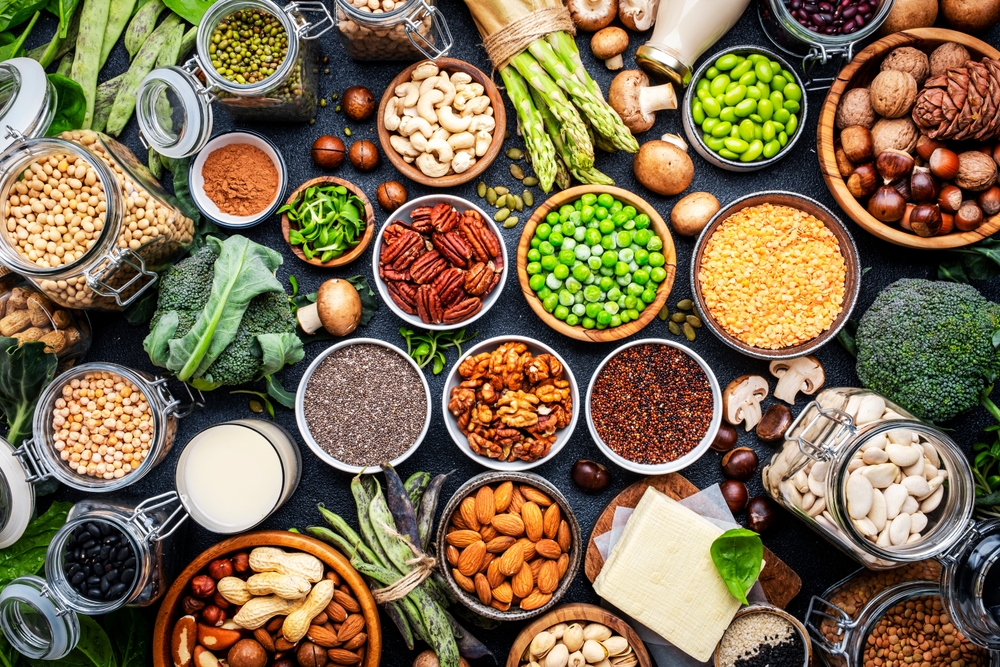The intake of plant-based proteins among the Dutch in 2024 increased by one per cent from the previous year. Although the supply of plant-based proteins increased considerably, the Dutch hardly matched this growth.
The ratio of plant-based versus animal proteins shifted from 39:61 to 40:60, the most recent edition of Wageningen Social and Economic Research’s (WSER) Protein Monitor shows. The monitor is produced at the behest of the Ministry of Agriculture, Fisheries, Food Security and Nature (Dutch acronym: LVVN). The protein monitor is designed to track the protein transition.

LVVN wants the ratio of plant versus animal proteins to reach 50:50 in 2030. Meat-eaters currently obtain 37 per cent of their proteins from plant-based sources. For flexitarians, this is 41 per cent, while vegetarians obtain 63 percent from plant-based products (see figure). The current transition speed is insufficient to attain the fifty-fifty goal in 2030, WSER researchers state.
Supply and demand
The supply of plant-based protein products in the online supermarket increased from 32 to 38 per cent in the last year. Moreover, the variety increased, and there was more marketing awareness for plant-based food than the previous year. The difference in cost also developed in favour of plant-based products, while the number of price promotions for animal-based products dropped slightly.
(Text continues below, graph is clickable.)

Despite these efforts, selecting animal protein products is still easier and more attractive. A sample showed that consumers are less motivated and less “savvy” when it comes to meat and dairy substitutes. Moreover, they receive less support from their environment: animal products are still the standard.
The supply of plant-based protein products is growing faster than the demand. Consumers want to eat meat, cheese and dairy because they know how to prepare them. While tofu and meat, dairy and fish substitutes score low on intention to buy, consumers indicate they intend to buy legumes, nuts, kernels and seeds. However, they fail to translate their intentions into action.

 Consumers indicate their intention to use legumes, nuts, kernels and seeds in their diets. Photo Shutterstock
Consumers indicate their intention to use legumes, nuts, kernels and seeds in their diets. Photo Shutterstock 

